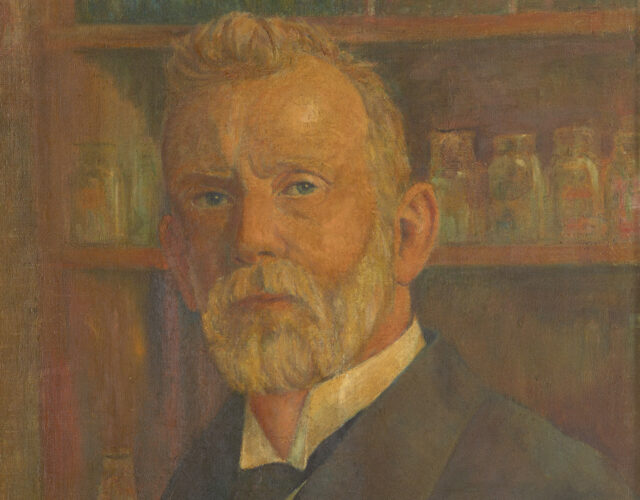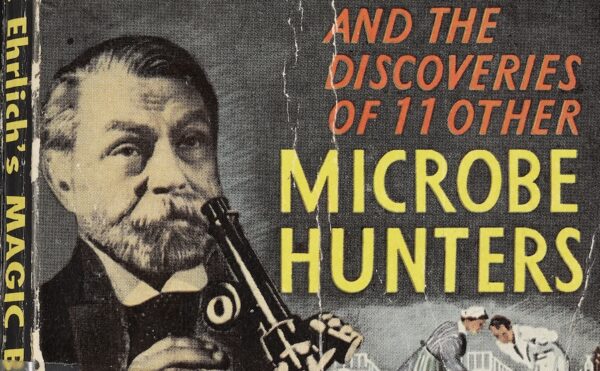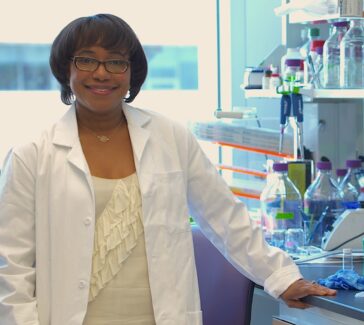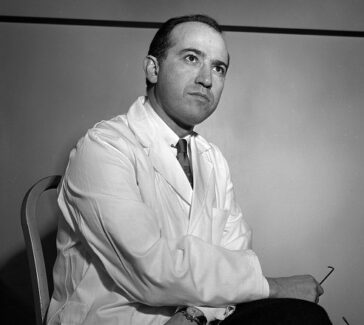Paul Ehrlich
Nobel laureate Paul Ehrlich conducted groundbreaking research on the body’s immune response and introduced the concept of a “magic bullet.”

German biochemist Paul Ehrlich (1854–1915) developed a chemical theory to explain the body’s immune response and did important work in chemotherapy, coining the term magic bullet. Ehrlich received the Nobel Prize in Physiology or Medicine in 1908.
In 1906 Ehrlich prophesied the role of modern-day pharmaceutical research, predicting that chemists in their laboratories would soon be able to produce substances that would seek out specific disease-causing agents. He called these substances “magic bullets.” Ehrlich himself met with signal successes in the emerging fields of serum antitoxins and chemotherapy.
Early Work with Dyes

Ehrlich was born near Breslau—then in Germany, but now known as Wrocław, Poland. He studied to become a medical doctor at the university there and in Strasbourg, Freiburg im Breisgau, and Leipzig. In Breslau he worked in the laboratory of his cousin Carl Weigert, a pathologist who pioneered the use of aniline dyes as biological stains.
Ehrlich became interested in the selectivity of dyes for specific organs, tissues, and cells, and he continued his investigations at the Charité Hospital in Berlin. After he showed that dyes react specifically with various components of blood cells and the cells of other tissues, he began to test the dyes for therapeutic properties to determine whether they could kill off disease-causing microbes. He met with promising results using methylene blue to kill the malaria parasite.
Antitoxins from Blood Sera
After a bout with tuberculosis and his subsequent cure with tuberculin therapy, developed by fellow German Robert Koch, Ehrlich focused his attention on bacterial toxins and antitoxins. At first he worked in a small private laboratory, but then he was invited to work at Koch’s Institute for Infectious Diseases in Berlin. The post-Pasteur era was an exciting time to be looking for cures and preventives, and Koch’s Institute was one of the best places to be.
Among Ehrlich’s new colleagues were Emil von Behring and Shibasaburo Kitasato, who had recently developed “serum therapies” for diphtheria and tetanus. Whereas Louis Pasteur’s vaccines and Koch’s tuberculin were made from weakened bacteria, these new serum therapies used blood serum, or cell-free blood liquid, extracted from the blood of naturally or artificially immunized animals to induce immunity. Von Behring and Kitasato evolved the concept of “antitoxin” to explain the immunizing properties of sera.
One of Ehrlich’s jobs at the institute was to make von Behring’s diphtheria antitoxin in quantity and later to review the quality of the product produced by the chemical-pharmaceutical company Hoechst. In carrying out this work, he determined how to boost immunity systematically and how to produce high-grade sera.
In recognition of Ehrlich’s accomplishments and of his promise as a researcher, in 1896 the Institute for Serum Research and Serum Testing was established for him in a Berlin suburb. In 1899 the institute moved to Frankfurt to more suitable quarters and was renamed the Royal Prussian Institute for Experimental Therapy.
A Nobel Prize and Magic Bullets

In 1908 Ehrlich shared the Nobel Prize in Physiology or Medicine with Élie Metchnikoff for their separate paths to an understanding of the immune response: Ehrlich presented a chemical theory to explain the formation of antitoxins, or antibodies, to fight the toxins released by the bacteria, while Metchnikoff studied the role of white blood corpuscles (phagocytes) in destroying bacteria themselves. By that time most scientists agreed that both explanations of the immune system were necessary.
Early in his career Ehrlich began to develop a chemical structure theory to explain the immune response. He saw toxins and antitoxins as chemical substances at a time when little was known about their exact nature. Up to that time, those scientists who were synthesizing therapeutic agents came at their tasks with few hypotheses about where and how these agents interacted with living systems.
Ehrlich supposed that living cells have side chains—a shorter chain or group of atoms attached to a principal chain in a molecule—much in the way that dye molecules were known to have side chains that were related to their coloring properties.
These side chains can link with particular toxins. According to Ehrlich, a cell under threat from foreign bodies grows more side chains, more than are necessary to lock in foreign bodies in its immediate vicinity. These “extra” side chains break off to become antibodies and circulate throughout the body. It was these antibodies, in search of toxins, that Ehrlich first described as magic bullets.
Chemotherapy
Serum therapy was for Ehrlich the ideal method of contending with infectious diseases. In those cases, however, in which effective sera could not be discovered, Ehrlich would turn to synthesizing new chemicals, informed by his theory that the effectiveness of a therapeutic agent depended on its side chains. These “chemotherapies” were to be the new magic bullets.
In Frankfurt, Ehrlich turned from his work on serum therapy to chemotherapies and dyes. First targeting the protozoa that were known to be responsible for certain diseases, such as sleeping sickness, he and the Japanese bacteriologist Kiyoshi Shiga synthesized trypan red as a highly effective cure for that disease.
In 1906 Georg-Speyer-Haus, a research institute for chemotherapy, was established with its own staff under Ehrlich’s direction. Soon this institute and the Hoechst and Cassella chemical companies reached an agreement that gave the companies the right to patent, manufacture, and market preparations discovered by Ehrlich and his colleagues. The companies further agreed to supply chemical intermediates for the syntheses that the staff of the institute would undertake.

Salvarsan
The researchers, now including an organic chemist, Alfred Bertheim, and a bacteriologist, Sahashiro Hata, broadened the targeted microorganisms to include spirochetes, which had recently been identified as the cause of syphilis.
Beginning with an arsenic compound, atoxyl, in three years’ time and three hundred syntheses later—for that day an amazingly large number—they discovered Salvarsan (1909).
Salvarsan was first tried on rabbits that had been infected with syphilis and then on patients with the dementia associated with the final stages of the disease. Astonishingly, several of these “terminal” patients recovered after treatment.
More testing revealed that Salvarsan was actually more successful if administered during the early stages of the disease. Salvarsan and Neosalvarsan (1912) retained their role as the most effective drugs for treating syphilis until the advent of antibiotics in the 1940s.






